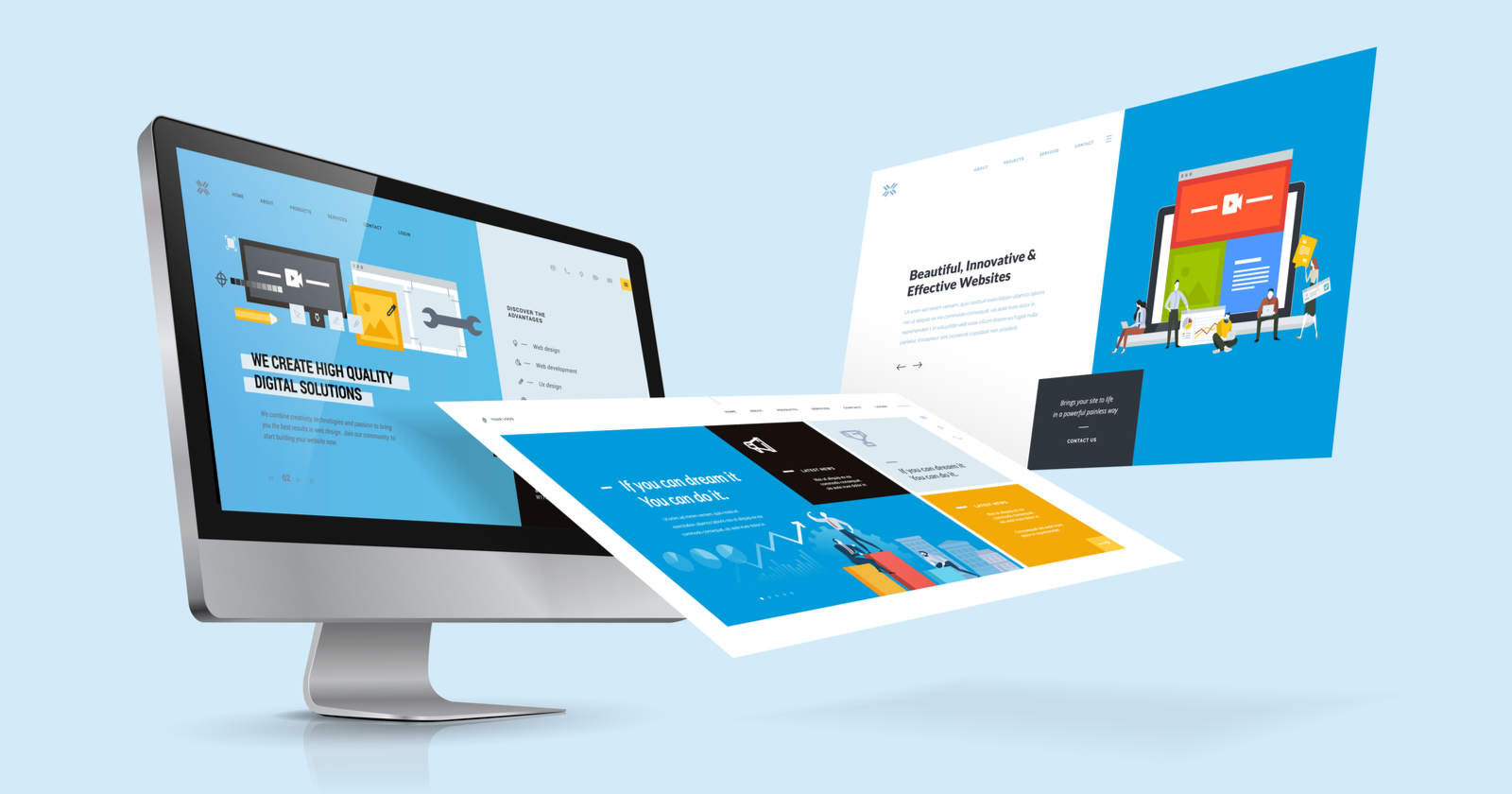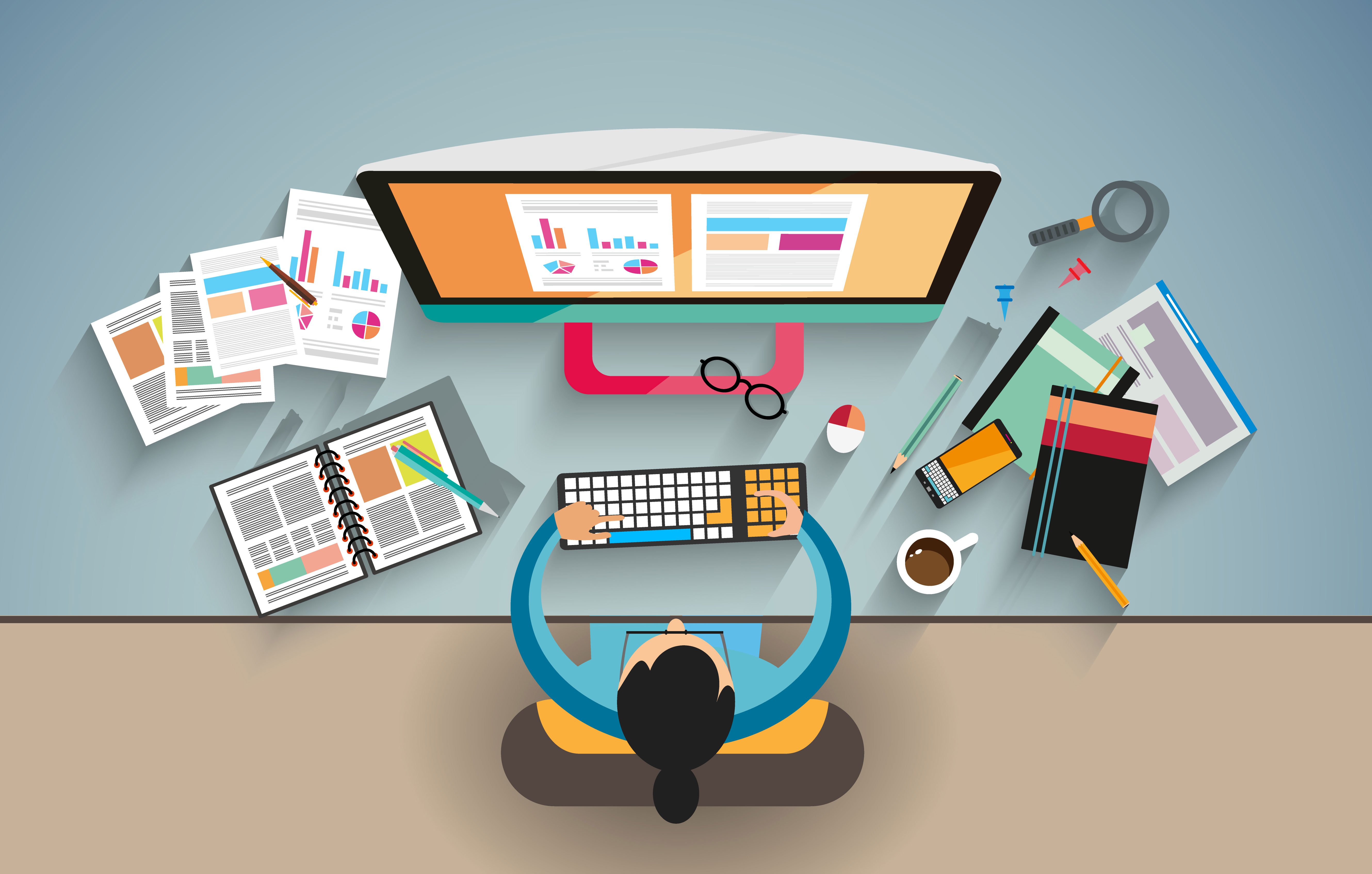The Very Best Types of Web Design to Boost Individual Experience and Involvement
In the ever-evolving landscape of electronic communication, the effectiveness of Web design dramatically influences individual experience and interaction. Various style techniques, such as minimalist, responsive, and interactive layouts, each deal special advantages that can provide to diverse individual demands.
Minimal Website Design
As electronic landscapes come to be progressively chaotic, minimal Web layout has become a powerful method to boosting user experience. This layout approach focuses on simpleness, focusing on vital components while eliminating unneeded interruptions. By making use of sufficient white area, straightforward navigation, and a minimal shade palette, minimal style promotes clarity and directs user interest to vital material.
The core principle of minimalist website design is to produce a seamless interaction for users. By lowering cognitive tons, customers can swiftly grasp info without really feeling bewildered. This direct strategy not only boosts use however also encourages engagement, as visitors are most likely to check out a site that is visually attractive and very easy to navigate.
In addition, minimalist design commonly highlights typography and images, using these components strategically to convey messages efficiently. This focus on necessary parts can boost brand name identity and create a memorable customer experience. Fundamentally, minimalist Web style is not just a trend; it is a thoughtful methodology that acknowledges the importance of user-centered style. By removing extraneous components, designers can produce a more appealing, reliable, and delightful Web experience for all users.
Responsive Web Design
In today's varied electronic setting, receptive website design has ended up being essential for creating a seamless customer experience across a wide variety of tools. As users accessibility internet sites on smartphones, desktop computers, laptops, and tablets, the ability of an internet site to adjust its layout and content to various screen dimensions and resolutions is crucial.
Responsive Web style utilizes versatile grids, photos, and CSS media queries to guarantee that Web material exists efficiently, no matter the device made use of. This method not only improves the visual charm of a web site but likewise significantly enhances usability. Users are most likely to engage with a site that offers a constant experience, as it gets rid of the aggravation of needing to zoom in or scroll exceedingly.
By embracing receptive layout, organizations can enhance their exposure and reach a broader audience. In recap, responsive Web design is a fundamental method that boosts individual experience, involvement, and overall complete satisfaction.
Interactive Website Design
Responsive website design lays the groundwork for improving customer experience, yet interactive Web style takes this an action better by engaging customers in a more vibrant way - Aligned Position Web Design. By integrating aspects such as computer animations, clickable models, and real-time feedback, interactive website design astounds individuals, drawing them into a richer surfing experience
This method not only promotes engagement however likewise encourages users to discover material proactively as opposed to passively consuming it. Techniques such as gamification, where customers gain rewards for completing tasks, can dramatically improve the moment invested in a website and improve overall complete satisfaction. In addition, interactive functions can simplify complicated information, making it a lot more delightful and absorbable.

Integrating interactive layout components can likewise lead to greater conversion prices, as individuals are most likely to engage with a website that proactively includes them. Aligned Position Web Design. Ultimately, interactive Web layout transforms user experiences right into remarkable trips, guaranteeing that site visitors return time and again
Flat Layout
Defined by its minimalistic strategy, level layout stresses simpleness and capability, removing unnecessary aspects and focusing on vital features. This design viewpoint prioritizes usability, making certain that individuals can browse user interfaces easily and performance. By using a tidy aesthetic, level design eliminates the mess often located in extra ornate designs, consequently improving user concentrate on web content and capability.
The hallmark of level style hinges on its use strong colors, easy typography, and geometric shapes. These aspects add to an aesthetically enticing interface that is both friendly and contemporary. Additionally, level style fosters a feeling of clearness, permitting individuals to discern crucial activities and information without distraction.
In addition, flat layout is particularly efficient in responsive Web design, as its simpleness equates well throughout various gadgets and screen dimensions. The absence of detailed structures and gradients lessens packing times, which is crucial for keeping user involvement. As digital landscapes proceed to advance, flat layout remains a pertinent choice for creating user-friendly internet sites that enhance general experience. By concentrating on important attributes, flat style not just fulfills user demands but likewise urges seamless interaction, making it an essential component of efficient click here now website design techniques. click over here now
Flexible Website Design
Flexible website design personalizes the user experience by producing several dealt with formats tailored to various screen sizes and devices. Unlike responsive layout, which fluidly changes a single layout, adaptive style employs distinctive formats for details breakpoints, ensuring ideal discussion on various platforms. This approach allows designers to concentrate on the special attributes of each gadget, improving functionality by providing precisely what users require based upon their context.
One of the primary advantages of flexible Web style is its capability to enhance tons times and performance. By offering customized material and images that fit the user's tool, internet sites can decrease data usage and boost loading rates. This is particularly useful for individuals with slower links or minimal data plans.

Additionally, flexible style facilitates a much more regulated and consistent branding experience. Since developers produce several formats, they can ensure that the aesthetic components align with the brand's identification across different systems - Aligned Position Web Design. This results in a cohesive individual experience, boosting involvement and advertising individual retention
Final Thought
In verdict, the integration of read the full info here minimalist, responsive, and interactive website design concepts significantly enhances user experience and interaction. Minimalist style fosters clearness and emphasis, while receptive layout makes certain adaptability across various gadgets, advertising access. Interactive layout astounds customers via vibrant components, urging expedition and personalization. Jointly, these layout comes close to add to the production of straightforward environments that not only improve complete satisfaction but also drive higher conversion prices, emphasizing their vital value in contemporary Web style strategies.

Minimalist layout cultivates quality and emphasis, while receptive layout makes sure adaptability across numerous tools, advertising accessibility. Collectively, these layout comes close to add to the development of user-friendly atmospheres that not just boost satisfaction but also drive greater conversion prices, emphasizing their crucial significance in contemporary Web layout methods.
Comments on “Aligned Position Web Design: Delivering High-Quality, User-Friendly Web Designs for Every Industry”